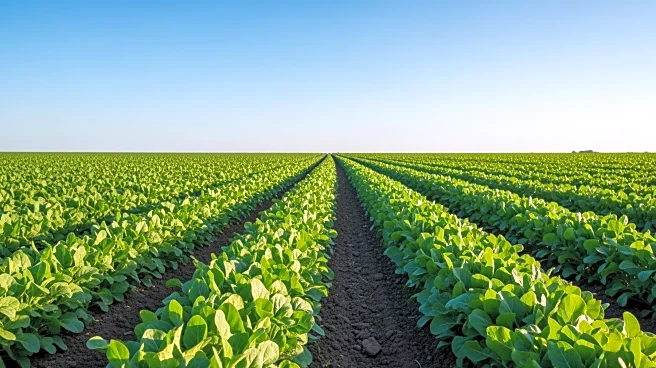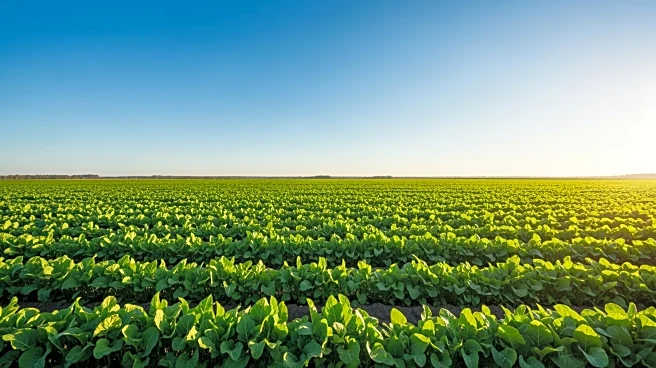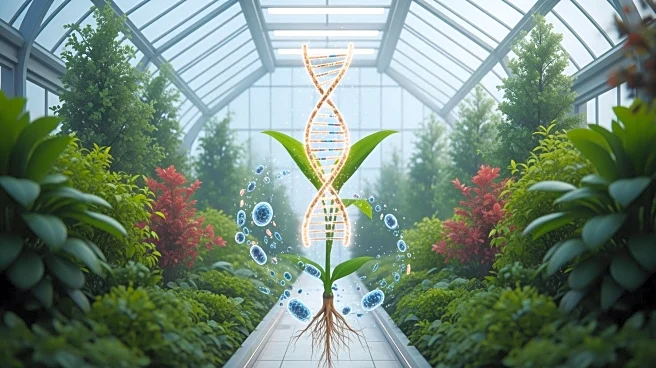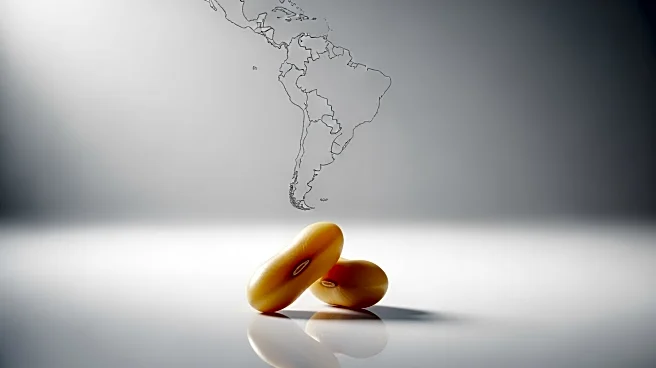What's Happening?
A recent analysis of five years of data from the Ag Economy Barometer (AEB) surveys reveals that the adoption of cover crops among U.S. farmers has remained relatively stable. The surveys, conducted by
Purdue University and the CME Group, indicate that approximately 53% of respondents currently plant cover crops, with this figure fluctuating between 52% and 57% over the past five years. The data also shows that while the national average for cover crop adoption was 4.7% in 2022, AEB respondents reported a significantly higher adoption rate of 22%. The surveys highlight that motivations for planting cover crops include improving soil health and erosion control, with 75% of current users reporting benefits to both soil health and crop yields.
Why It's Important?
The findings underscore the importance of cover crops in sustainable agriculture, as they contribute to soil health and erosion control. However, the disparity between the national average and AEB respondents' adoption rates suggests that economic factors and profitability concerns are significant barriers to broader adoption. The data indicates that while many farmers recognize the agronomic benefits of cover crops, financial constraints and potential yield impacts deter wider implementation. This highlights the need for continued support and incentive programs to encourage more farmers to adopt these practices, which are crucial for long-term agricultural sustainability and environmental health.
What's Next?
As economic conditions and incentive programs evolve, monitoring trends in cover crop adoption will be essential. Policymakers and agricultural stakeholders may need to address profitability concerns and provide more robust support to encourage broader adoption. Future surveys and studies could focus on the impact of economic incentives and agronomic outcomes on the sustainability of cover crop use, potentially leading to policy adjustments that better support farmers in adopting these conservation practices.
Beyond the Headlines
The stable adoption rates of cover crops among AEB respondents, despite economic challenges, suggest a growing recognition of their environmental benefits. This trend could signal a shift towards more sustainable farming practices, driven by both ecological awareness and consumer demand for environmentally friendly products. The ongoing dialogue between farmers, policymakers, and consumers will likely shape the future of agricultural practices in the U.S., with cover crops playing a pivotal role in achieving sustainability goals.











